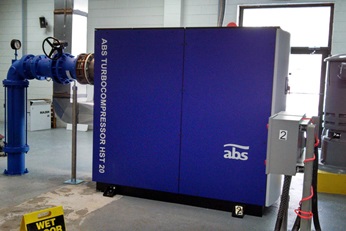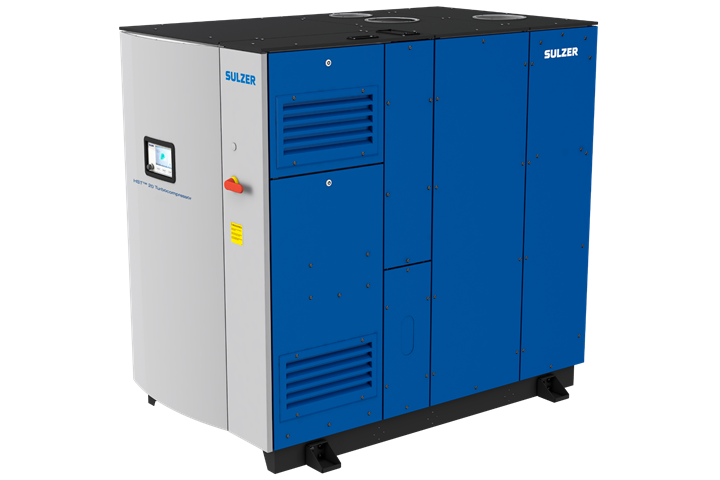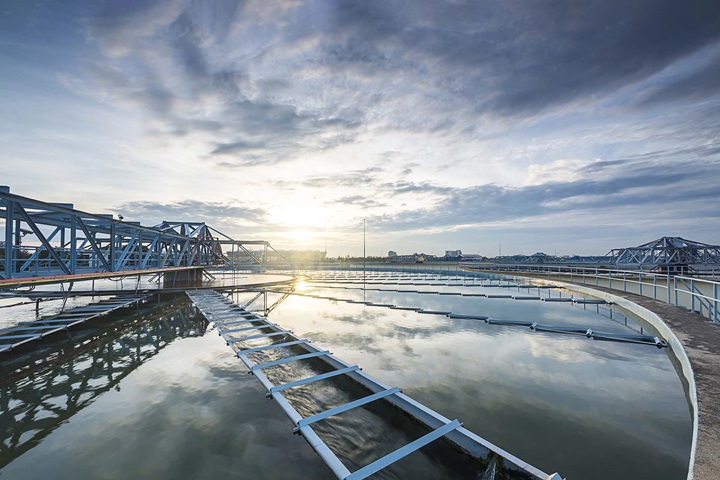-
HST™ turbocompressorThe modern and silent HST™ turbocompressor features an advanced design with proven magnetic bearing technology and a high-speed motor driven through a built-in frequency converter.
Top efficiency while minimizing cost and environmental impact
HST™ turbocompressor exceeds energy savings goal
The wastewater treatment plant utilizes the trickling filter fixed film process. The chlorinated effluent is pumped to the aerated stabilization pond with a capacity of 18 million gallons and an average depth of approximately 10 feet. The pond is equipped with fine bubble air diffusers.
The challenge
The existing multi-stage centrifugal blowers had been in operation since the mid-1970s and had exceeded their useful life. Typically one blower was in operation 24 hours/day, 365 days/year with the second blower acting as a standby unit. The main blower had experienced significant bearing and impeller failures making the main blower inoperable, thus compromising the redundancy of the aeration system.
Upon reviewing the performance data provided by the blower manufacturers, an estimated wire-to-air power of 69.9 kilowatts was deemed to be reasonable and was therefore used to compute the blower’s expected energy consumption and energy savings.
The solution
The Township of Neptune Sewerage Authority embarked on a project to replace their existing inefficient multi-stage centrifugal blowers that supplied air to the plant’s aerated stabilization pond in efforts to increase the overall blower efficiency of the aeration system, reduce electrical energy costs, and to improve overall system reliability. After much research, the Authority decided to pursue the installation of HST turbocompressors manufactured by Sulzer on a “Try and Buy” basis. The blowers were commissioned in December 2013.
Richard Crane, Sr. Technical Environmental Engineer - T&M AssociatesTop
The Sulzer turbocompressors have on average provided a power savings of 58% as compared to the power draw of the original multi-stage blowers. This power savings has resulted in energy savings of $32’800 to date.
Customer benefit
The projected annual energy consumption for the blower based upon estimated air inlet conditions and published blower performance for wire-to-air horsepower requirements yielded a projected annual energy consumption of 735’840 kWh per year with a projected annual energy savings of 735’840 kWh – 612’324 kWh = 123’516 kWh per year. At an electric energy rate of $0.108/kWh, the projected annual energy cost savings was calculated to be $13’340/year.
Encouraged by the the calculated savings, TNSA elected to participate in the New Jersey Clean Energy Custom Measures Program. Based upon the submitted application, the expected energy incentive was computed to be $19,762 with an internal rate of return of 10%.
TNSA has received an energy incentive check from the New Jersey Clean Energy Program in the amount of $19’425. Based upon actual power recording readings, the actual energy savings was 303’315 kWh/year and at an electric energy rate of $0.108/kWh, yielding an actual energy savings of $32’800 and exceeding the calculated savings.
After 120 days of the blowers in operation, the average electrical energy consumption was approximately 46 kilowatts; considerably less than the anticipated energy consumption of 69.9 kilowatts.
Product data
The HST 20 turbocompressor is a completely integrated and practically noiseless package. The air cooling system, outlet diffuser, silencers and more are all incorporated into the cabinet, which eliminates the cost of installing separate accessories.
Once in operation, the maintenance is limited to regular check-ups and occasional change of the air filter.
Magnetic bearings allow the HST turbocompressor to be run in a safe and controlled manner with small impeller clearances.
The control system of the HST 20 visualizes necessary actions on the touchscreen display and uses stored process data to help operators make far-reaching improvements.
HST 20 turbocompressor
| Airflow range | 1'300 - 4'400 scfm |
| Pressure | 4 - 13 psi |
| Input power | 150 - 250 hp |


